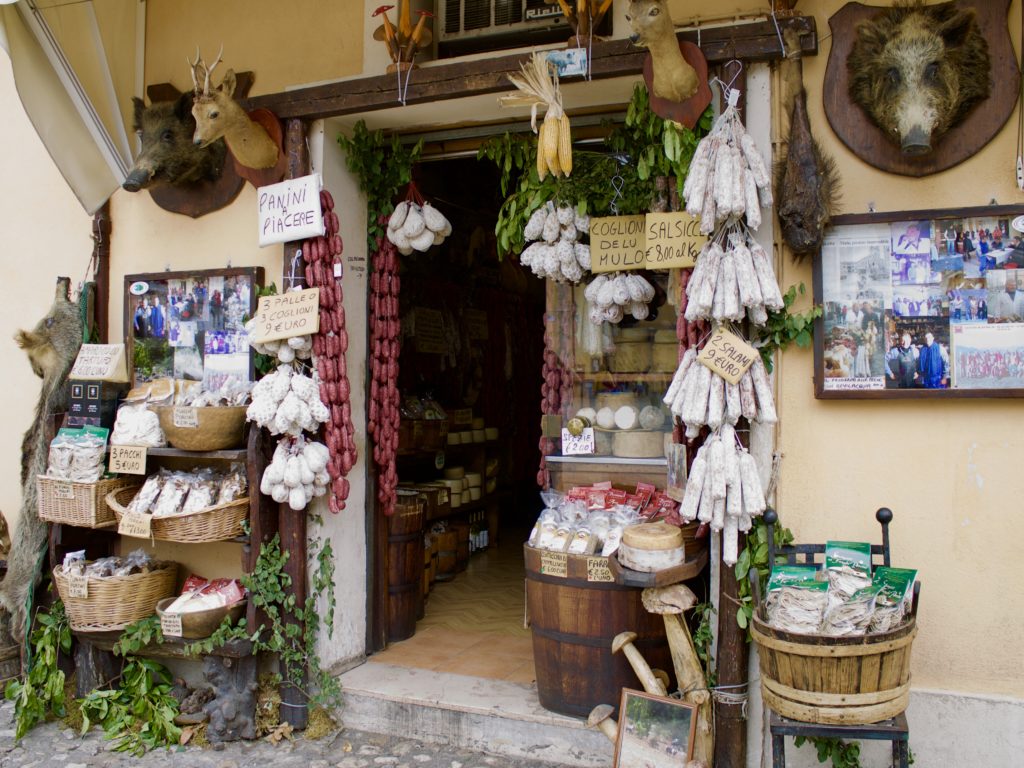
“NOT NORCIA!” I cried out as I saw the news of the October 30th earthquake on an Italian friend’s Facebook page.
As I watched footage of the damage in the town I’ve enjoyed so much I began to cry.
“Oh, not the church!” My tears doubled as I realized that the historic basilica of Saint Benedict had collapsed.
Even before I read the words, I knew, this was the single most significant loss of Italy’s artistic heritage in an earthquake since the ceiling of Basilica of St Francis in Assisi came down in 1997.
Saint Benedict, who founded the Benedictine monastic system, was born in Norcia in 480 along with his twin sister, Saint Scholastica. His church had, until a few days ago, stood the test of time since the Middle Ages.
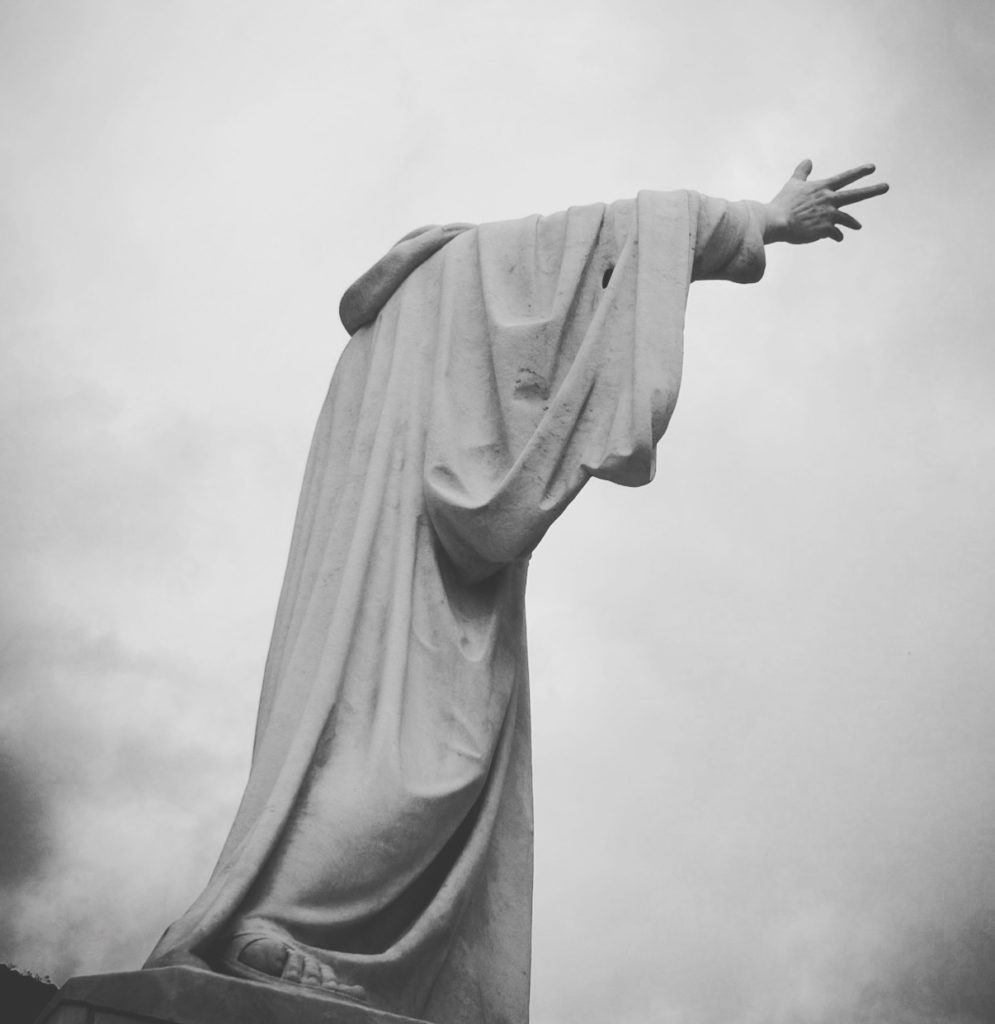
I first went to Norcia in 2004 when I was living in Florence and then again this spring after a twelve-year absence. Nestled below the Sibylline Mountains in the far eastern part of Umbria, Norcia is a little town that packs a big gastronomic punch, and for me, as a foodie, and a historian, it is a very worthy destination.
Norcia is home to the best butchers in Italy, particularly for pork products. As a result, shops throughout the country that focus on pork products are often called Norcineria.
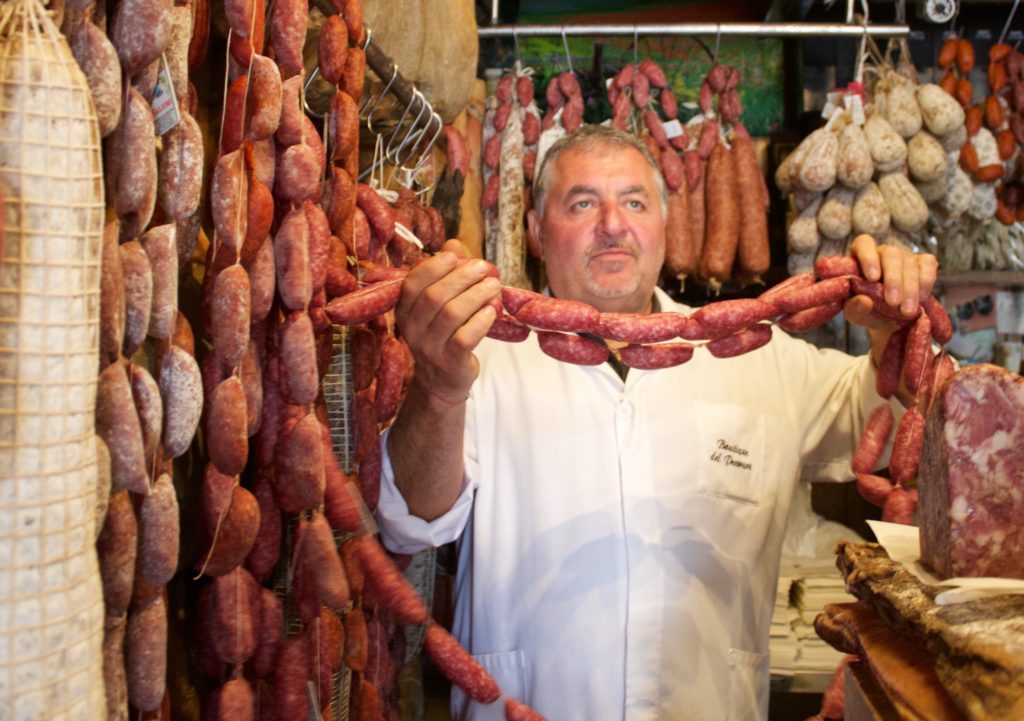
The area is also known for mushrooms, black truffles, farro, and the smallest lentils in the world that are cultivated in Castelluccio, above Norcia in the mountains.


Additionally, the American monks who joined the order in Norcia started a brewery, which was, in their words, “conceived to share the joy arising from the labor of our own hands.” From this endeavor comes Birra Nursia’s two beers, a blond ale and a Belgian strong ale.
On my first trip there, in 2004, I stayed at the Grotta Azzurra Hotel, where the young man a the front desk, Federico, proudly told me that his family had run the hotel for four generations.
I recall him saying how peaceful the town was. “We can get everywhere by foot, and we don’t even have to lock our cars or our bikes.”
Then he offered to take me to the shop of the oldest butcher family in Norcia. In the Norcineria Ansuini shop, I met Signore Ansuini who sliced prosciutto for me try.
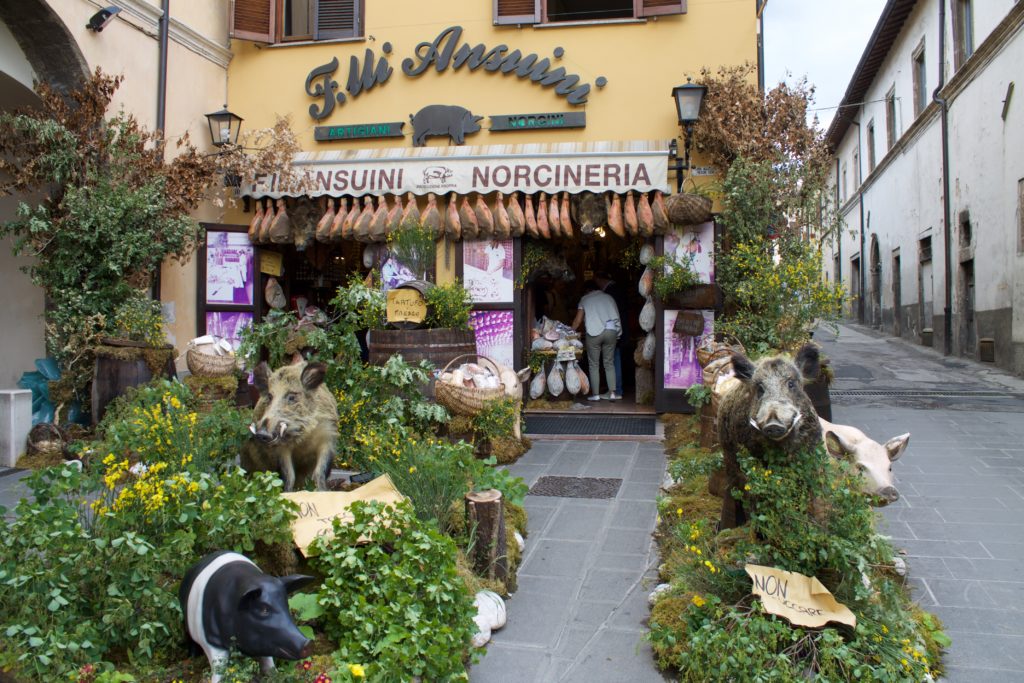
Like in so many shops in Norcia, the shelves groaned with cheese wheels, salumi and jars of black truffles. On the floor, wooden barrels were full of tiny lentils, farro, and white beans. Above our heads hung sausages called Corallina and Lonza.
Signore Ansuini offered to take me up the street to his cellar. Through a door in the wall, we dropped into a cavernous room below the street where from rough-hewn branches, his precious sausages hung.
He pointed to a Lonza sausage that had been aged for a year and said, “No one ages these for a year anymore. I do it because I want to have the very best.”
“Simple ingredients,” he said as he explained how they’re made. “Just a bit of fennel, salt and pepper and of course the highest quality meat.”
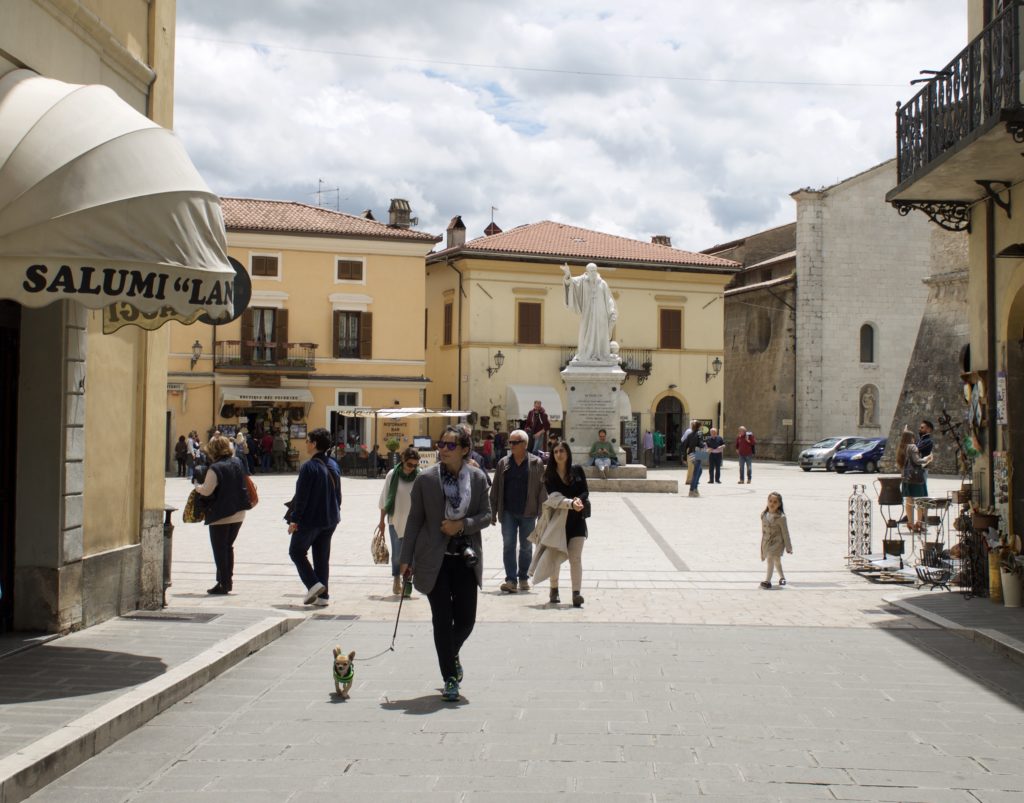
Walking back towards the hotel, Federico stopped in the main piazza and pointed out to me, on the façade of the church, the statues of Saint Benedict and his twin sister, Saint Scholastica. The church, he told me, was constructed on top of the ruins of the house where the two saints were born. He took me in to show me the remnants of their home, telling me that Saint Benedict was named Patron of Europe in 1964 by the Pope.
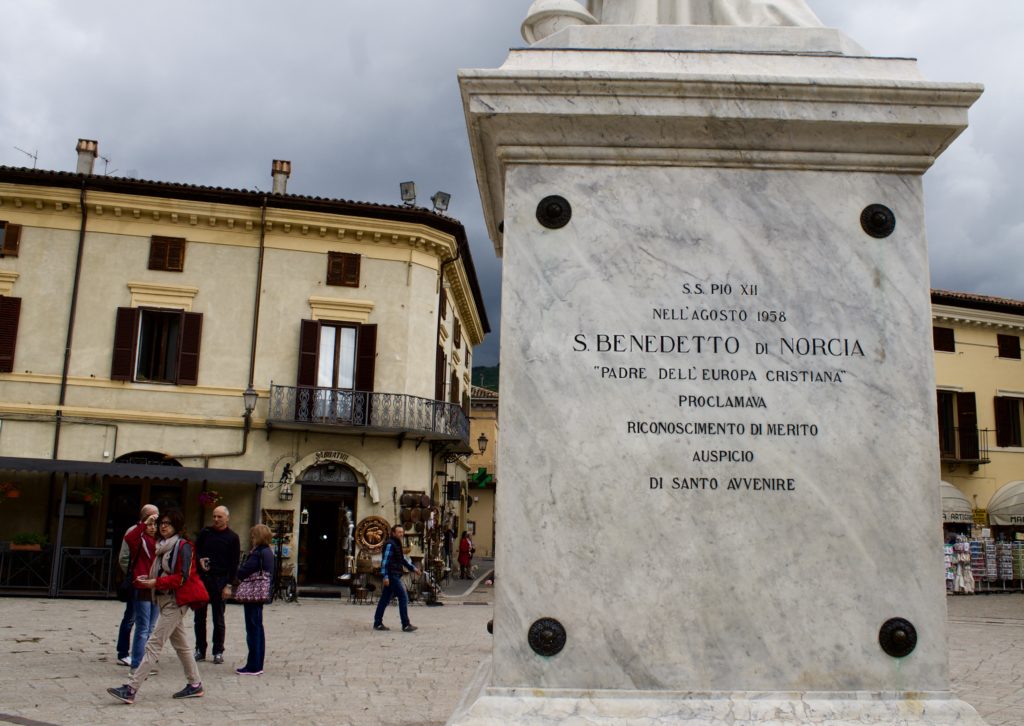
After noting that Saint Scholastica’s brother had a statue in the middle of the piazza as well as the main basilica, I asked Federico, “Anything that honors his sister?”
“There is a church dedicated to her in the cemetery outside the city walls,” he replied.
This spring, I was excited to go back to Norcia, having fond memories of it from twelve years prior. My friend John and I stopped in on the town for a few hours after two days in the Monti Sibillini.
We went into Saint Benedict’s Basilica–something that no one misses on a visit to this little town, and sadly I took no interior pictures, never imagining that five months later it would be gone.
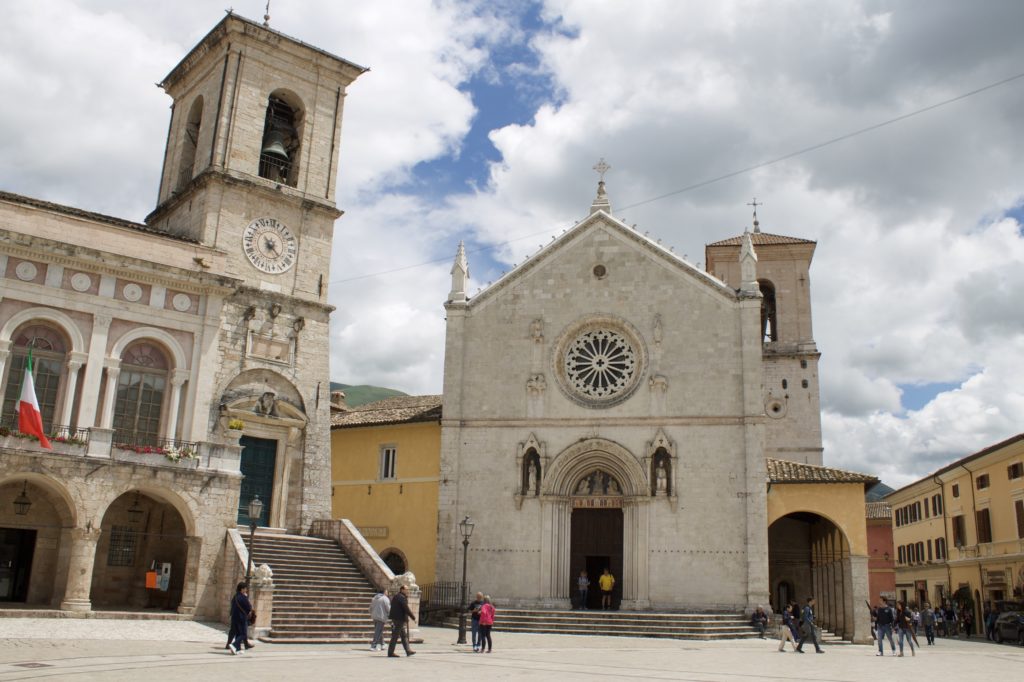
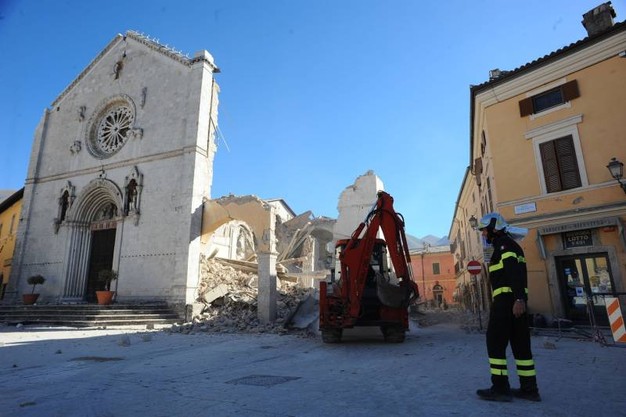
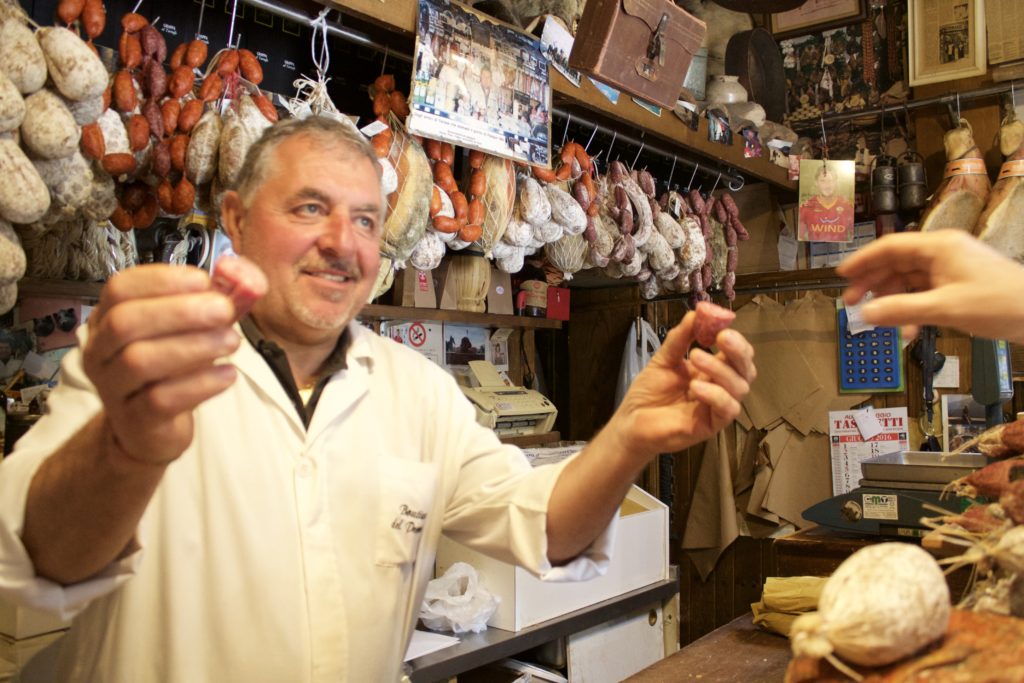
We were entertained in each shop, taking in the beautiful displays and trying the products happily shared with us by grinning shop owners.
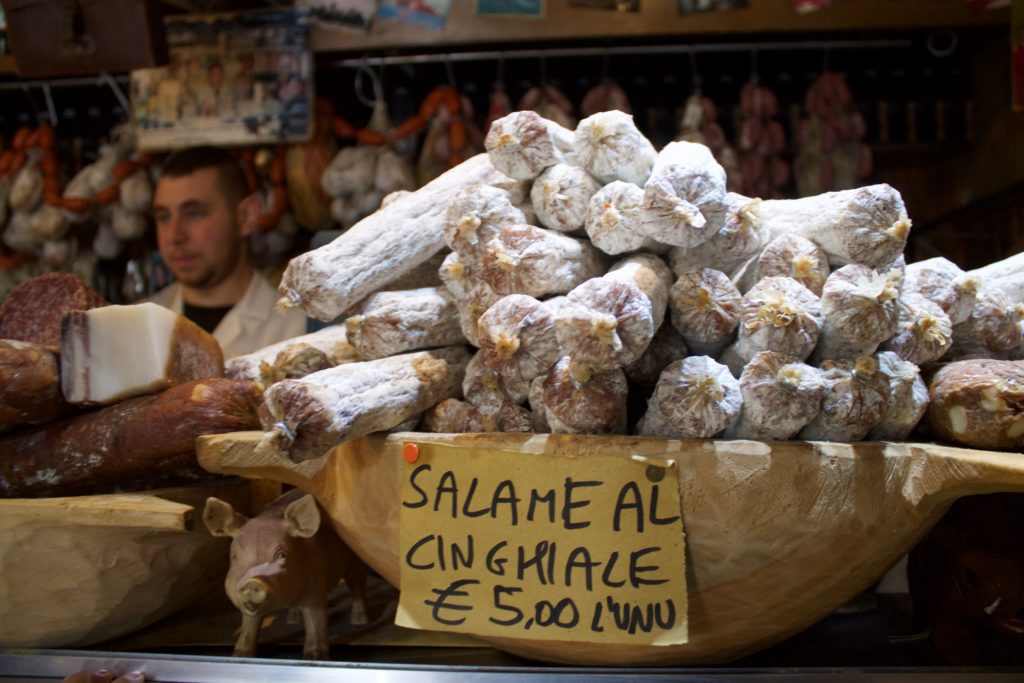
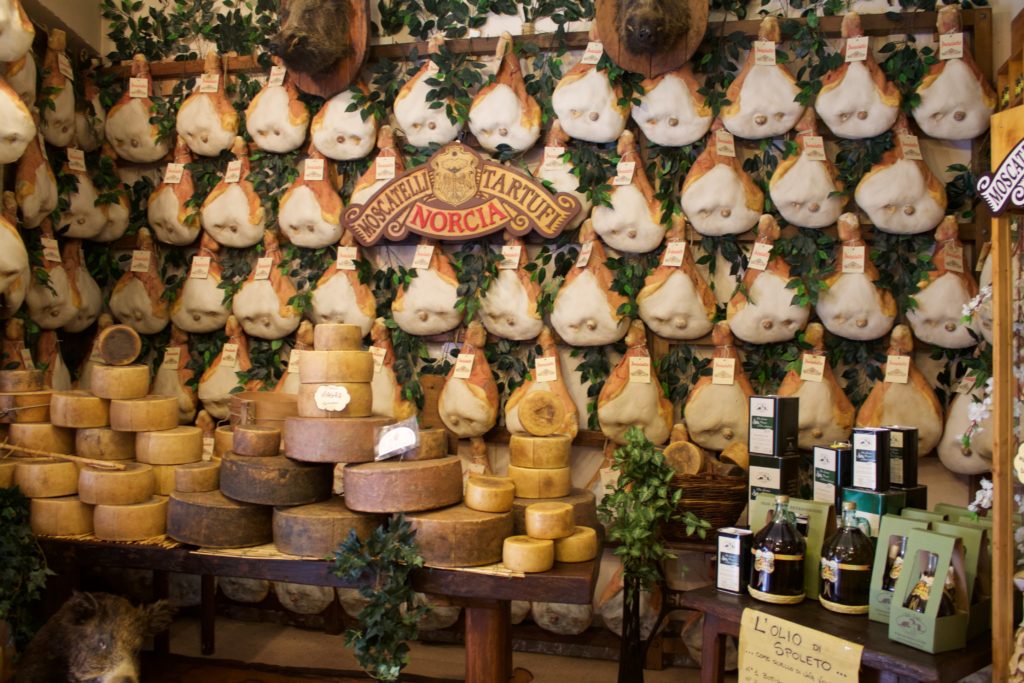
Then we chose one of the many inviting trattorie for a last lunch before John headed south to Rome, and I, north to Tuscany. John had homemade rigatoncini with a white sauce of pecorino and ricotta and salami and I opted for a Farro soup.

Through an opening in the large walls, we exited the town, carrying sticks of cinghiale sausage and jars of truffles. My affection for Norcia had been reignited, making my tears all the more bitter on October 30th.
Norcia was known in ancient times as Nursia. Because of the skills of the town’s doctors and surgeons, nursino came to mean “one who cares for other people”– clearly where our word nurse comes from. And now we need to care for Norcia by donating to earthquake relief to help rectify the basilica and reinvigorate the food artisans and their traditions.
How to Donate
After the quake, the Benedictine monks of Norcia wrote on their website, “Our rebuilding efforts are directed to two monastic sites in Norcia: one at the Basilica of San Benedetto, the other at San Benedetto in Monte. We humbly ask that you participate by making a financial contribution to this project, which will deepen the monastic roots in Norcia and help bring hope to the people and region.”
This post has been nominated for an award, but I need your vote to enable me to actually get the award. Please take a minute, click on the picture below and vote for me! Mille Grazie.
Check out these other unique destinations in Italy, written up by my fellow bloggers:
Lugana: Italy’s (Mostly) Hidden Gem by Martin Redmond, ENOFYLZ Wine Blog
Going Home to Capaccio-Paestum by Danielle Oteri, Feast On History
A Weekend Guide To Visiting Camogli by Valerie Quintanilla, Girl’s Gotta Drink
Wines on the Island of Sardinia with Vigne Surrau by Jennifer Genitle Martin, Vino Travels
Picturesque Pienza: The Ideal Renaissance Town by Li Valentine, The Wining Hour


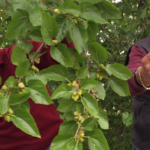

What a beautiful tribute to Norcia. These earthquakes are bringing all kinds of tragedy. I hope they can recover quickly and continue those wonderful traditions that make this part of Italy so special.
Thanks Katy!
Lets hope they gets lots of help with recovering and no more earthquakes.
Thanks for sharing this Chandi. Norcia looks and sounds like an amazing place. I’m a fan of cinghiale sausage. Heartbreaking news about the basilica in town…I’m saddened to see the damage. We were in Umbria for a couple of days. Loved the place. If we ever make it back, Norcia will be on the list!
That’s great Martin, I am sure you’ll enjoy visiting Norica. And try to leave time to go up into the Monti Sibillini: http://paradiseofexiles.com/the-monti-sibillini-italys-secret-corner/
The earthquakes are so unfortunate and devastating, but thanks for shedding light on this delightful, unique town in Italy and its gastronomy. I’ve never been to Norcia, but you transported me there with those great photos and descriptions.
How nice to hear that you felt transported there 🙂 Yes, I can only imagine how devasting it has felt for the residents and I hope they know of our empathy.
Many thanks for that fine tribute Chandi. The Norcia that was looks absolutely glorious. What a tragedy, I’m so sorry that we never went there.
Thanks for your note Julian. Yes, I did that too after living in Italy… so many places I didn’t visit, and wondering why later. But I was working a lot, and a lifetime in Italy isn’t enough.
Just tried Pasta alla Norcina for the first time this weekend (made it at home). Truffles, cream and sausage… how could I go wrong? But man, that recipe’s a keeper.
That’s awesome Mike! YUM!
Great to see some images before all the ones we’re seeing now of the destruction.
Sorry to say I never made it to Norcia, but enjoyed learning more about it unfortunately through this terrible tragedy.
What a lovely introduction to a town I have yet to visit. It is always sad to see history crumble and (physically) disappear but our memories and the history books and stories will keep it alive…
There is so much more of Umbria I want to explore, I have barely touched that area but this makes me even more determined to get there the next time I’m in Italy
Thanks Brooke. I hope you have many more trips to Italy in your future!